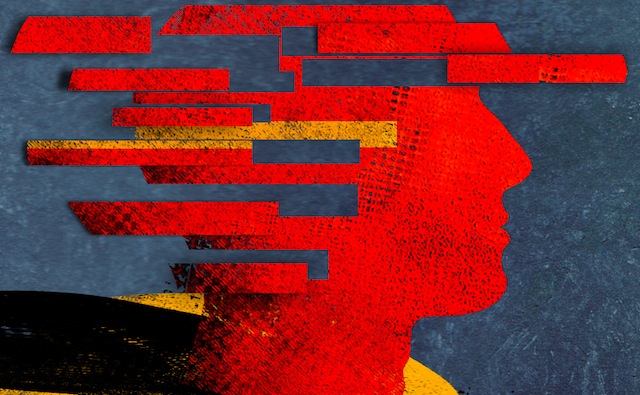The distinction between linear and interactive documentaries. Open Documentary Lab at MIT

The Research Forum is OpenDocLab’s space for researchers to voice their opinions and test new theories. As part of our mission to promote the exchange of ideas about the new arts of documentary, we hope to encourage academic discussion and debate about these emerging forms by creating a place where researchers can develop ideas and interact with the field. The views presented here belong to their authors, and will necessarily take different forms. In the spirit of the documentaries we study, we look forward to community collaboration and exchange as the ideas explored in the Research Forum take root, grow and support the development of the field.
We are happy to welcome Arnau Gifreu Castells, an OpenDocLab visiting research affiliate, as the inaugural contributor to the Research Forum. A Professor of Communication Studies at the Universitat Oberta de Catalunya (UOC) and the Universitat de Vic (UVIC), Arnau is also a member of the i-Docs group. The Director of the UVIC_Lab, the Digital Content Laboratory at UVIC, he has also held research lecturer positions at Harvard University (Harvard Metalab) and York University (Future Cinema Lab).
The distinction between linear and interactive documentaries: new approaches, reconsidering everything
by Arnau Gifreu Castells
Since March 2013 we have been trying to define the interactive documentary with our Research Position at Open Documentary Lab. In the initial series we focused on analysing the two main components of the interactive documentary field – the documentary genre and interactive media – outlining some key concepts in the two fields.
In the next series of posts we will establish the basic distinction between linear and interactive documentaries, focusing in this case on the new approaches that force us to reconsider everything.
For Laetitia Moreau, director of the interactive documentary The Challenge (Honkytonk, 2011), it is important for documentary filmmakers to accept the nomenclature of “new media documentary”, because, according to Moreau:
“When the word “web-doc” is pronounced, we sometimes have the impression that we’re entering a fourth dimension. It’s not true. It’s a different approach. Just as exhilarating, because it allows us to try new types of writing, which revolutionize the form. For example, the usual hierarchy of a linear production no longer makes sense, it’s necessary to invent a new one. It’s an incentive to reconsider everything, a tremendous subject for reflection and creation. So it’s vital not to leave this domain to the programmers or webmasters, no matter how smart they are. The journalists and documentary filmmakers must invest in it so that their knowledge, their power of observation becomes part of it.” (Documentary Network, 2011, p. 21)
There are so many unanswered questions that we can only find answers through the experimentation necessary with these new creative models. The study of the Documentary Network of Canada, Documentary and New Digital Platforms: an Ecosystem in Transition (2011, p. 21) concluded that the interactive documentary based on digital platforms is a “technological evolution from the movie machine whose mission is to tell stories.”
As the texts of web documentaries are based on many of the conventions of representation of film and television documentaries, they also make use of interviews and observation sequences, of sound and images collected on site, and of commentaries either in the form of text or voiceover. Structurally there are also similarities, as there are in the use of narrative and categorical structures. There are also, of course, differences, particularly the change of the temporal organization of the items to a different spatiotemporal organization and “remediation” (in the sense of rearrangement, rehabilitation) for the non-fiction contents, such as books, photographs, maps, etc.. (Bolter and Grusin 2000).
In addition to the contexts of production characteristics and text, it is also possible to speak of continuity in terms of purpose. Corner (1999) identifies three traditional functions of the documentary: democratic civic education (providing information and/or advertising to attract the audience as active citizens), journalistic investigation and radical interrogation (questioning the status quo and providing alternative perspectives). Webdocs often deal with classic documentary subject matter – environmental, social and political issues – either as investigation and/or as journalism. The content and focus of web documentaries can often be indistinguishable from the television documentary. For all these reasons, Kate Nash states that, with regard to subject matter, audiovisual and interactive gender patterns may maintain links:
“For all these reasons it is not improbable to think that audiences will conceptualise their experience of the webdoc on the basis of their familiarity with traditional documentary. It also suggests that the concepts and tools used in the study of film and television documentary are likely to provide insights into the webdoc.” (Nash, 2011, p. 7)
Arnau Gifreu Castells (PhD)
Research Affiliate, MIT Open Documentary Lab
agifreu@mit.edu
Image post: Catalina Acelas
References
Belghiti, Matthieu, Dressen, Arnaud and Moreau, Laetitia. HONKYTONK FILMS, The challenge. 2009, http://www.canalplus.fr/pid3400.html
Bolter, Jay David y Grusin, Richard, Remediation. Understanding New Media, Cambridge: MIT Press, 2000.
Documentary Network/Observatoire du Documental. AAMI. APFC. APFTQ. AQTIS. ARRQ. ASTRAL. CBC. CFTPA. DGC. DOC. ONF-NFB. RIDM. SARTEC. SRC . TÉLÉ-QUÉBE. VIDÉOGRAPHE, Documentary and New Digital Platforms: An Ecosystem in Transition, 2011.
Gifreu, Arnau (2012), The interactive documentary as a new audiovisual genre. Study of the emergence of the new genre, approach to its definition and taxonomy proposal and a model of analysis for the purposes of evaluation, design and production. [Doctoral Thesis]. Barcelona: Universitat Pompeu Fabra. Communication Department.
Nash, Kate, “Modes of interactivity: analysing the webdoc” in: Media, Culture & Society, 34 (2), 2011, pp.195-210.
Bonus tracks / Further readings
Differences between linear and interactive documentaries – Arnau Gifreu (via i-docs)
http://i-docs.org/2011/12/12/differences-between-linear-and-interactive-documentaries-featuring-the-interactive-documentary-i/
The Challenge – Honkytonk Films
http://www.honkytonk.fr/index.php/portfolio/the-challenge/
Honkytonk Films – Wikipedia
http://en.wikipedia.org/wiki/Honkytonk_Films
modes of interactivity: analysing the webdocs – Kate Nash
http://mcs.sagepub.com/content/34/2/195.full.pdf
Original article from MIT Open Documentaty Laboratory Research Forum


